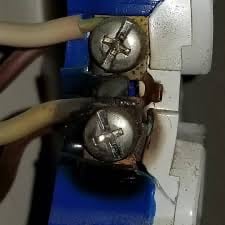The Silent Killer: Why a Loose Neutral Can Wreck Your Whole System
People usually consider overloaded circuits, faulty breakers, and old panels critical electrical safety issues. A hidden, loose, neutral wire may damage your lighting system and refrigerator. Ignoring the problem can rapidly increase financial losses, reaching thousands of dollars. We will focus on identifying the “silent killer” while presenting ways to prevent its destructive impact.
BLOG
4/10/20252 min read


What Does a Neutral Wire Do?
The neutral wire carries the returning current to the electrical panel. It distributes the electrical load between the system’s two 120V hot wires. Flawless electrical system performance is achieved when connections stay secure, circuits maintain balanced loads while providing even light distribution, and appliances run smoothly.
But here’s the key: The neutral wire is the conduit for electrical imbalances between the two hot wires in an electrical system.
The neutral wire maintains system stability during the operation of appliances like toasters and microwaves across separate electrical legs. The wire is the essential part that ensures load balancing in split-phase electrical systems.
The Danger of a Loose Neutral
Loose or corroded connections at panels or junction boxes create voltage instability between the system’s two hot wires. One hot leg reading 90V and the other measuring 150V disrupts the voltage balance, which should remain steady at 120V. During extreme operating conditions, voltage spikes can reach dangerously high levels.
What does this mean for your home?
• Lights flickering or dimming unexpectedly
• Appliances making strange noises or burning out
• Surge protectors tripping
• Breaker panels buzzing or smelling hot
• Electronics failing without explanation
The scariest part? These issues often appear gradually. Electricians call a loose neutral wire the silent killer because it can inflict damage without creating visible sparks or flames. Because this problem creates silent damage, electronic devices connected to the system experience shortened operational lifespans.
How to Prevent a Loose Neutral Disaster
1. Know the signs.
You should conduct a detailed inspection whenever you see lights flickering in different fixtures and outlets with unstable power.
2. Schedule a panel inspection.
To keep the main panels and subpanels operational and safe, electricians must perform inspections every few years. Electrical experts evaluate the torque setting at the neutral bus bar, confirm tight connections, and inspect for corrosion and signs of heat damage.
3. Don’t ignore burning smells or buzzing.
These are red flags. When you notice hot smells near electrical panels or outlets and detect buzzing noises, immediately shut off the power and call an electrician.
4. Use an outlet tester or voltage monitor.
These affordable tools help detect voltage deviations, protecting electrical systems from considerable damage. Modern smart plugs now offer features allowing users to monitor the voltage in real time.
5. Upgrade old aluminum wiring connections.
Aluminum branch circuits in homes loosen more often than circuits made from alternative materials. When connecting aluminum wiring, installers should use pigtail copper connections that incorporate antioxidant compounds or CO/ALR-rated devices.
Final Thoughts
The loose neutral wire poses the highest hidden danger among household electrical risks. The problem does not trigger breaker activation and remains undetected for extended periods. When this issue stays unresolved, appliances and electronics will suffer damage, and fire hazards will become possible.
If you suspect a neutral issue—don’t wait.
You should immediately hire a licensed electrician to inspect and fix any suspected loose neutral wiring. Finding this covert hazard during its early stages enables you to prevent costly destruction and protect against impending disasters.
ShockTalk: Your Code-Safe Guide
We help electricians, contractors, and DIYers build safer systems with real-world electrical expertise and simplified NEC guidance.
Expertise
Want Tips from a Master Electrician?
Email: info@shocktalk.org
Support Hours: Mon–Fri, 8am–6pm CST
817-716-1579
© 2025. All rights reserved.
